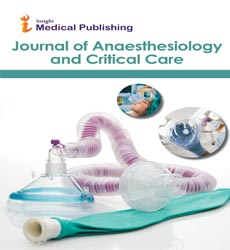Advancement of an Anaesthesiology Disaster Response Plan
Christian Mueller*
Department of Anesthesiology, University of Minnesota, Minneapolis, MN, USA
- *Corresponding Author:
- Christian Mueller
Department of Anesthesiology, University of Minnesota, Minneapolis, MN, USA
E-mail: christianmueller@gmail.com
Received Date: November 25, 2021; Accepted Date: December 09, 2021; Published Date:December 16, 2021
Citation: Mueller C (2021) Advancement of an Anaesthesiology Disaster Response Plan. J Anaesthesiol Crit Car. Vol.4 No.3:12
A disaster, according to the World Health Organization, is "a serious disruption in the functioning of a community or society resulting in widespread human, material, economic, or environmental losses that exceed the affected community's or society's ability to cope using its own resources." 1 Disasters can have a significant impact on the demand for and delivery of health care, as evidenced by Hurricane Katrina; earthquakes in Bam, Iran, and Haiti; and the response to regional or global pandemics, such as the Ebola outbreak in western Africa from 2014 to 2016 and the ongoing COVID-19 pandemic. To provide effective care for patients at all times, disaster planning is required. The year 2020 has seen a significant number of disasters in the United States alone, including the COVID-19 pandemic, wildfires across the western United States, and a large number of devastating hurricanes and storms across the southeastern United States.
Managing the fallout from these events has necessitated coordinated, forceful responses from the health-care industry. Because many disasters occur without warning, successfully managing the health care implications of a disaster necessitates the development of a thorough, comprehensive strategy to effectively use health care personnel, facilities, and equipment ahead of time. Disasters are frequently dynamic, and response plans must be adaptable to rapidly changing circumstances, whether it is a single event, such as a flood, or a long-term event, such as the COVID-19 pandemic. In the case of a health-care crisis, this could include changes in staffing models, geographic patient locations, personal protective equipment, and a variety of other factors.
The specific roles of anesthesiologists during a disaster response are discussed, as well as the various ways in which anesthesiologists can contribute individually and in collaboration with other health care providers. There is already a robust literature for disaster planning from various specialties and government agencies, so contributions from other medical fields, such as trauma surgery and emergency medicine, are reviewed. Disaster planning and several examples of disaster plans are discussed. Disaster plans are documents and strategies that guide the acquisition of resources and allow health systems to execute adaptive and flexible plans if a disaster occurs. The role of anesthesiologists in the development and implementation of a disaster response plan is given special consideration.
The effects of responding to a disaster on medical personnel are also considered. Disasters can have a direct impact on health care providers (physical injuries) or secondary effects (financial loss or psychological trauma). There is discussion of the various types of injuries, both physical and psychological, and their impact on health care workers.
Different Types of Disasters
There are numerous ways to categorise disasters, but one way to distinguish them in terms of their impact on health care is to consider whether or not they have caused physical damage to health care facilities and the infrastructure that supports them. The stress on the health care system is caused by the need to triage patients and effectively manage a surge in demand from injured patients in the case of many mass casualty events, ranging from transportation accidents to mass shootings. In the aftermath of these disasters, hospitals in the United States primarily employ the Hospital Incident Command System, which outlines a command structure and responsibilities in the event of a mass casualty incident. A major consideration in these types of mass casualty events is adequate resource marshalling and patient triage.
The Function of Anesthesiologists during a Natural Disaster
Anesthesiologists are uniquely qualified to help with disaster relief. According to research, approximately half of all injuries sustained during an earthquake involve fractures of some kind, with many requiring surgical intervention. Anesthesiologists can provide anaesthesia in a variety of ways, some of which are well-suited to disaster or limited-resource settings. Nonetheless, anaesthesia delivered under disaster conditions is likely to differ significantly from anaesthetics typically delivered under stable conditions.
Open Access Journals
- Aquaculture & Veterinary Science
- Chemistry & Chemical Sciences
- Clinical Sciences
- Engineering
- General Science
- Genetics & Molecular Biology
- Health Care & Nursing
- Immunology & Microbiology
- Materials Science
- Mathematics & Physics
- Medical Sciences
- Neurology & Psychiatry
- Oncology & Cancer Science
- Pharmaceutical Sciences
